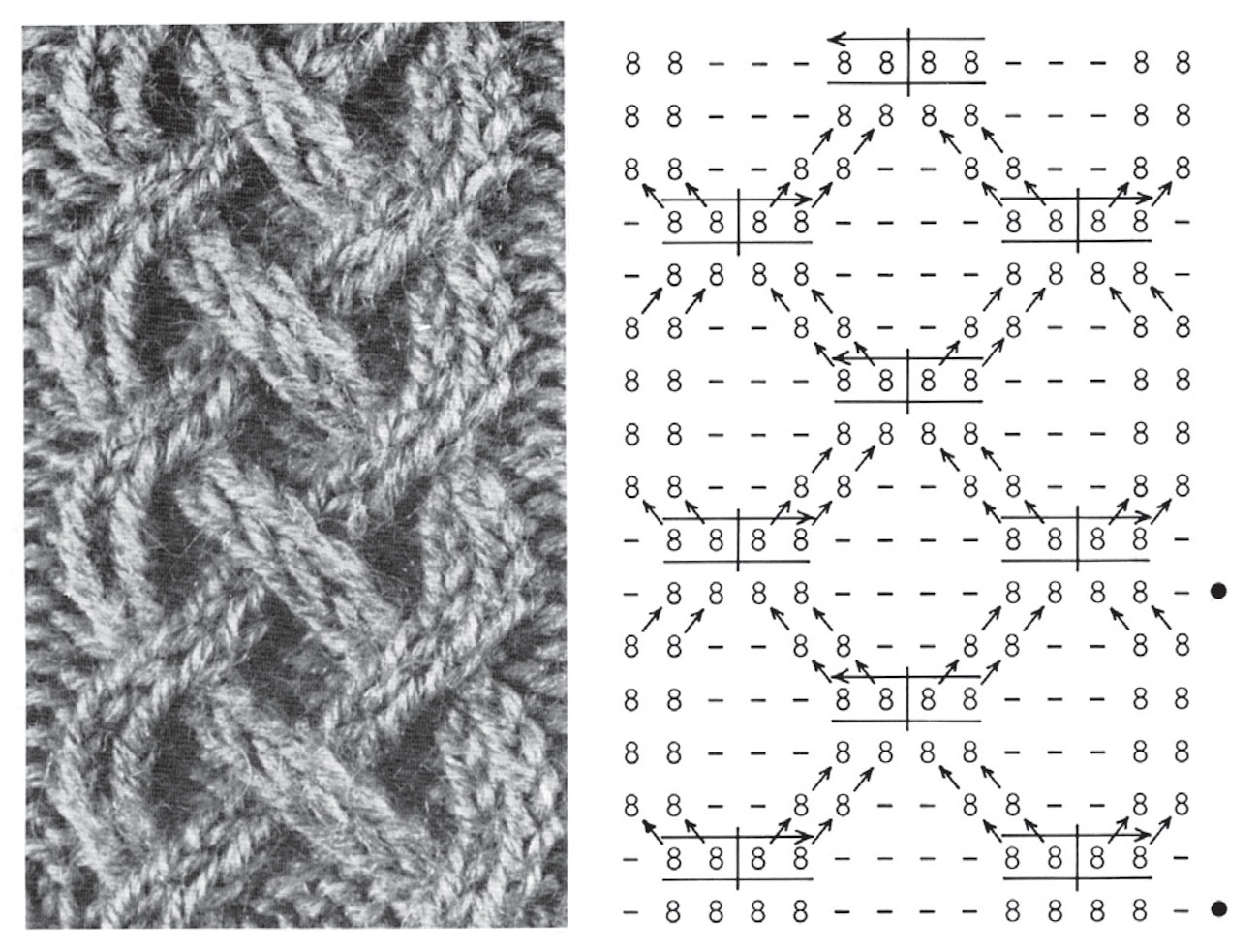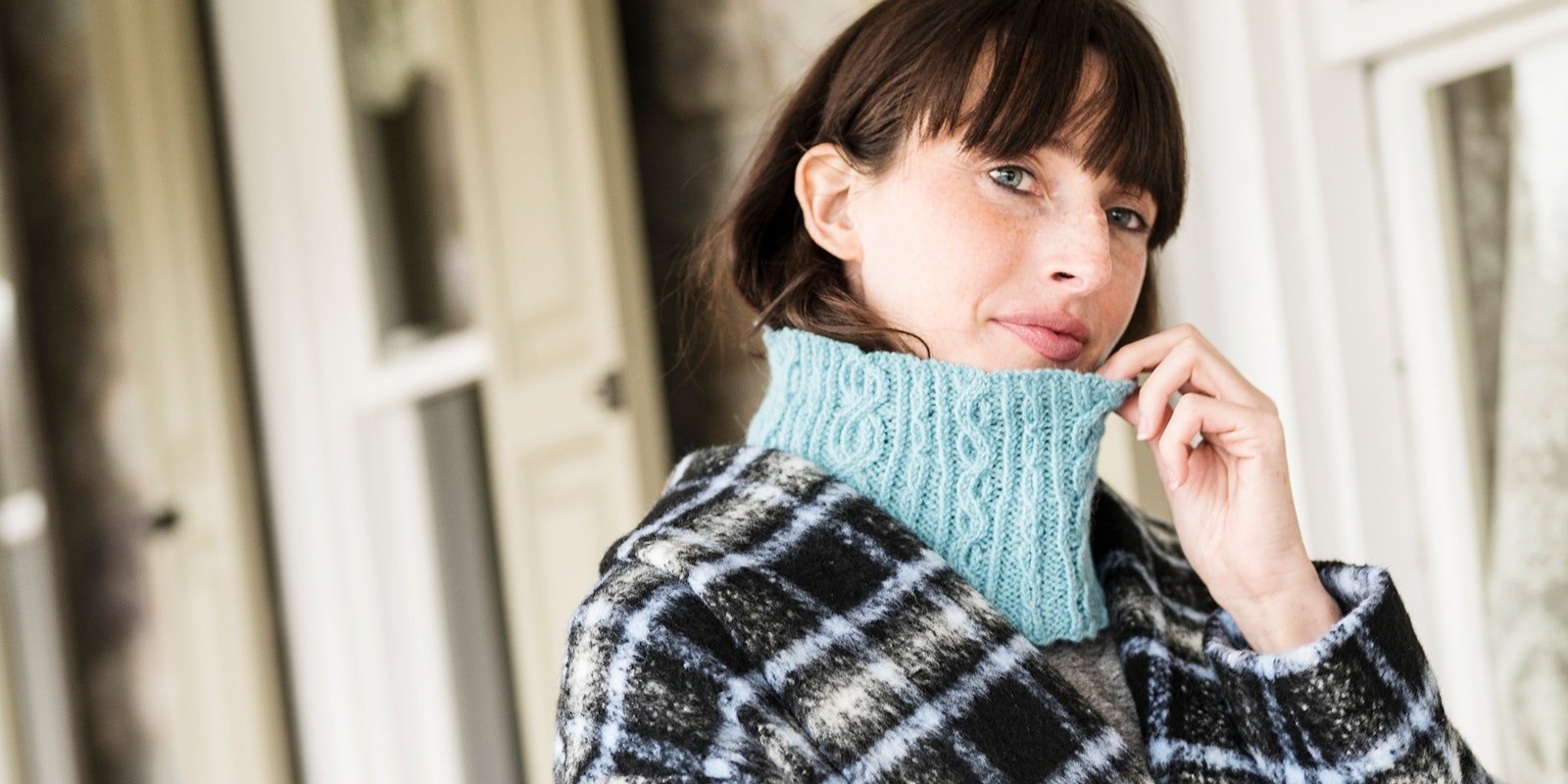Meg Swansen’s article in the premier issue of Farm & Fiber Knits details her decades-long efforts to bring a book of twisted-stitch knitting designs to English-speaking knitters.
The striking designs known as twisted-stitch knitting feature slender columns of knit stitches worked through their back loops, which stand in sharp relief against and travel across a background of purl stitches. The motifs look like architectural stonework with their intertwined motifs. As Meg Swansen’s husband commented when he first saw a piece she had knitted with the technique, “This looks as though it had been carved in wool.”
Meg explored twisted knitting in detail, first when she imported Maria Erlbacher’s trio of booklets about the technique and later when she published them in an English edition. (The publication took years of investigation and persuasion, which Meg describes in her article “Twisted-Stitch Knitting: A Long Path to Publishing a Traditional Work” in the premier issue of Farm & Fiber Knits.) One of the features of the book is the original method that the author used to chart the twisted-stitch patterns.
“It took a while to grasp the unique charting method, but luckily each chart is adjacent to a clear photo of the finished knitting,” Meg wrote. “For the first few weeks, I knitted only from the photos, but soon understood the charts and now I—along with the expert American teacher of this technique, Candace Eisner Strick—find them to be superior. As I knitted the two cowls for this article, I was struck anew by Erlbacher’s ingenious mode of charting for this particular technique.”
A Charting Original
Across different publications and eras, many knitting charts have slight variations: a knit stitch may be an empty square or a V, a purl stitch may be a dot or a dash, and increases and decreases can be exceptionally quirky. At first glance, though, Maria Erlbacher’s charts are like nothing you’ve ever seen. The dashes that represent purl stitches look familiar, but there are columns of 8’s and arrows. What gives?

It’s actually pretty simple: The 8’s are twisted knits (imagine a 0 knitted through the back loop). The dashes make it easy to count rows between crosses because they look like purl bumps. “The arrows are positioned below the activity,” as Meg explains. “The horizontal arrows above the crosses indicate the direction and result of pairs of cabled (traveled) stitches.” Although the chart will be unfamiliar to users of many popular charting methods, it’s not difficult to follow. The method emphasizes the direction that the stitches move and what the fabric looks like.
Twisted-stitch knitting and Erlbacher’s charts are one of the best kinds of knitting: the kind that looks harder than it is. To try it out in Meg Swansen’s Twisted-Stitch Cowls, pick up the premier issue of Farm & Fiber Knits. To learn more about the technique, see Meg’s archived Newsletter #25/Spring 2014 from Schoolhouse Press or Erlbacher’s book Twisted-Stitch Knitting.

